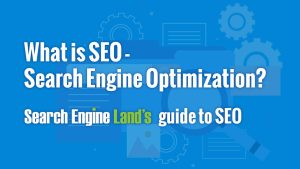On-Page SEO expart in bangladesh
On-page SEO is a fundamental aspect of search engine optimization that focuses on optimizing individual web pages to rank higher and earn more relevant traffic in search engines. Unlike off-page SEO, which involves external factors like backlinks and social signals, on-page SEO involves adjusting elements within the page itself. Here’s a detailed look into the critical components of on-page SEO, their significance, and how to effectively implement them.
1. Content Quality
Relevance and Value: The core of on-page SEO is high-quality content. Content shoul
d be relevant to the user’s search intent and provide value by addressing their needs or answering their questions. High-quality content is well-researched, engaging, and unique. Search engines like Google prioritize content that is useful to users, which can lead to higher rankings and better visibility.
Keyword Integration: Incorporating relevant keywords naturally into your content is crucial. Keywords are terms or phrases that users enter into search engines. By strategically placing these keywords within your content, headers, and meta descriptions, you help search engines understand the topic of your page. However, avoid keyword stuffing, which can harm your rankings and readability. Focus on creating content that naturally integrates keywords and addresses user intent.
2. Title Tags
Importance and Optimization: The title tag is one of the most critical on-page SEO elements. It appears as the clickable headline in search engine results and is crucial for attracting users. A well-crafted title tag should include primary keywords and be engaging enough to encourage clicks.
Best Practices:
- Keyword Placement: Place primary keywords toward the beginning of the title tag.
- Length: Keep title tags under 60 characters to ensure they display fully in search results.
- Uniqueness: Each page on your site should have a unique title tag that accurately reflects the content of that page.
3. Meta Descriptions
Role and Crafting: Meta descriptions are brief summaries that appear below the title tag in search results. While they don’t directly influence rankings, they play a crucial role in attracting users to click on your link. A compelling meta description can improve your click-through rate (CTR), which can indirectly impact rankings.
Best Practices:
- Engaging Content: Write a concise, engaging summary of the page’s content.
- Keyword Inclusion: Include relevant keywords naturally, but avoid overstuffing.
- Length: Aim for 150-160 characters to ensure the full description appears in search results.
4. Header Tags (H1, H2, H3, etc.)
Hierarchy and Structure: Header tags help structure your content hierarchically, making it easier for both users and search engines to understand. The H1 tag typically represents the main heading, while H2, H3, and other tags are used for subheadings.
Best Practices:
- H1 Tag: Use one H1 tag per page to denote the primary topic. Include main keywords if relevant.
- Subheadings: Use H2 and H3 tags to break content into sections and sub-sections. Incorporate keywords into these headings to enhance relevance.
5. URL Structure
Creating SEO-Friendly URLs: URLs should be clean, descriptive, and include relevant keywords. A well-structured URL helps search engines and users understand the content of the page.
Best Practices:
- Descriptive: Use descriptive URLs that reflect the content of the page.
- Keywords: Include primary keywords in the URL.
- Hyphens: Use hyphens to separate words rather than underscores.
6. Internal Linking
Benefits and Strategies: Internal linking involves linking to other pages within your own site. This helps distribute page authority and enhances navigation, making it easier for users and search engines to find related content.
Best Practices:
- Relevance: Link to relevant pages that provide additional value or context.
- Anchor Text: Use descriptive anchor text that gives users an idea of what the linked page is about.
- Avoid Overlinking: Don’t overload a page with too many internal links, which can dilute the value of each link.
7. Image Optimization
Enhancing Performance and Accessibility: Images can significantly impact page load speed and user experience. Optimizing images ensures they load quickly and enhances accessibility for users with visual impairments.

Best Practices:
- Alt Text: Provide descriptive alt text for images to improve accessibility and help search engines understand the image content.
- File Names: Use descriptive, keyword-rich file names.
- Compression: Compress images to reduce file size without compromising quality, which helps improve page load times.
8. Mobile-Friendliness
Importance in Modern SEO: With the increasing use of mobile devices, ensuring that your site is mobile-friendly is crucial. Google uses mobile-first indexing, meaning the mobile version of your site is considered the primary version.
Best Practices:
- Responsive Design: Use a responsive design that adapts to different screen sizes and devices.
- User Experience: Ensure that navigation, content, and interactive elements work well on mobile devices.
9. Page Load Speed
Impact on User Experience: Page load speed affects both user experience and SEO. Slow-loading pages can lead to higher bounce rates and lower user satisfaction.
Best Practices:
- Optimize Resources: Minimize and compress CSS, JavaScript, and HTML files.
- Leverage Caching: Use browser caching to reduce the load time for returning visitors.
- Content Delivery Network (CDN): Utilize a CDN to distribute content across multiple servers and improve load times.
10. User Experience (UX)
Creating a Positive Experience: User experience plays a critical role in on-page SEO. A positive UX can lead to longer time spent on the site, lower bounce rates, and higher engagement.
Best Practices:
- Readability: Ensure that content is easy to read with appropriate font sizes, line spacing, and visual breaks.
- Navigation: Design intuitive navigation that helps users find information easily.
- Interactive Elements: Implement interactive elements like forms, buttons, and call-to-actions that enhance user engagement.
11. Schema Markup
Enhancing Search Results: Schema markup is a form of structured data that helps search engines understand the content of your page better. It can enhance search results with rich snippets, providing additional information like reviews, ratings, and event details.
Best Practices:
- Implement Relevant Schema: Use schema markup relevant to your content, such as article, product, or event schema.
- Test Markup: Use tools like Google’s Structured Data Testing Tool to ensure proper implementation.
12. SSL Certificate
Ensuring Security: An SSL certificate provides a secure connection between the user’s browser and your server. Google considers HTTPS as a ranking factor, and an SSL certificate can also boost user trust.
Best Practices:
- Secure Your Site: Ensure your site uses HTTPS to provide a secure browsing experience.
- Update Links: Update internal and external links to use HTTPS.
Conclusion
On-page SEO is a crucial component of an effective SEO strategy. By optimizing various elements within your web pages, you enhance the relevance, usability, and accessibility of your site, which can lead to higher search engine rankings and better user engagement. From creating high-quality content and optimizing title tags to ensuring mobile-friendliness and improving page load speed, each aspect of on-page SEO contributes to a more effective and user-friendly website. By focusing on these areas, you can improve your site’s performance in search engines and provide a better experience for your visitors.


